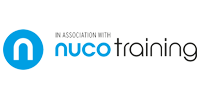This Spill Kit for Chemicals and Oils Training course aims to teach you best practices when handling spillages of hazardous liquids, how to prevent spillages and how to use the equipment safely. We also look at the potential risks associated with these hazardous spills.
Spilt chemicals and oils can pose a serious risk to people and the environment
This training course is broken down into 2 sections
Spills can happen at any time and almost anywhere in the workplace. Employees must know how to use spill kits in the workplace, so you’ll be able to deal with a spill properly.
Your organisation may have its own specific spill response or emergency plan, describing the procedure to follow in the event of a spill and telling you who you should contact. If your organisation has one, then make sure you read it, so you know what you have to do and who you have to tell.
Spills of significant size can pose a large risk to people and the environment. A spill kit contains various absorbent items that can be used when there is a leak or spillage of a hazardous liquid. They are designed to stop the spillage from spreading further and help start a clean up process.
There are various sized spill kits that you can buy for your workplace but generally speaking, there are 3 variations of spill kits: a general purpose spill kit, oil and/or fuel spillage kits and chemical spills.
Spill kits should only be opened in emergencies. Most contain the same base products, PPE (personal protective equipment), materials to stop leakages, waste bags and materials to seal drains. Some workplaces may have multiple sizes and multiple purpose spill kits.
When you encounter a spill, the first and most important thing is to protect yourself first. This spill kit Training Course looks at what a spill kit contains, when you need to use it and what procedure to follow when you encounter a spill.
Minimum of 6 delegates and maximum of 12 delegates.
This course is designed for anyone who needs to use Spill Kit equipment at work. This can include anyone from management to general employees who are faced with a spillage of any liquids.
Delegates will receive a certificate of attendance. We recommend that this course is renewed every three years.
½ day.
Introduction – an overview of the course and a short discussion of attendees’ current level of knowledge and experience.
Demonstration of contents of Spill Kit – delegates to be shown the contents of a Spill Kit supplied by their employers (if one available) and items from the Kit discussed.
Isolation – discuss the area where spillage occurred and invite delegates to identify potential dangers arising (ie cigarettes, smoking areas, sources of ignition and wind direction).
Give an example of isolation such as using hazard warning tape and hazard warning signs.
Containment – demonstrate to delegates on how to use the equipment to contain a spillage (using socks or booms). Identify Personal Protective Equipment (PPE) such as a one piece protective suit, goggles and gloves and communicate to delegates the importance of using suitable equipment.
Absorb – demonstrate to delegates how to apply the absorbent pads correctly.
Clean up – advise delegates that contaminated pads, socks and PPE equipment should be placed into hazardous waste plastic bags (provided as part of the Spill Kit), secured with cable ties and the contents of waste to be written on outside of the bag warning of hazardous contents.
Granules – describe to delegates how to apply granules (supplied in the Spill Kit) to the affected area after using absorbent pads and how to dispose of the granules in the correct manner.
Dispose – describe to delegates how to store and dispose of hazardous waste at their workplace.
Re-order – describe to delegates the importance of ensuring that stocks are replenished as soon as they are used.
Questions and answers – time for attendees to clarify and query any of the points raised in the course.
RDC Safety Limited have a strong team of specialist trainers who develop and deliver bespoke courses tailored to suit your business’s individual requirements. From personal consulting, to providing training courses, and bespoke policies and procedures, RDC Safety Limited invests the time to understand your business.





We‘d love to discuss your requirement further so please do get in touch by emailing info@rdcsafetylimited.co.uk or
calling 07971 202356. Alternatively, you can reach us by filling in our contact form.